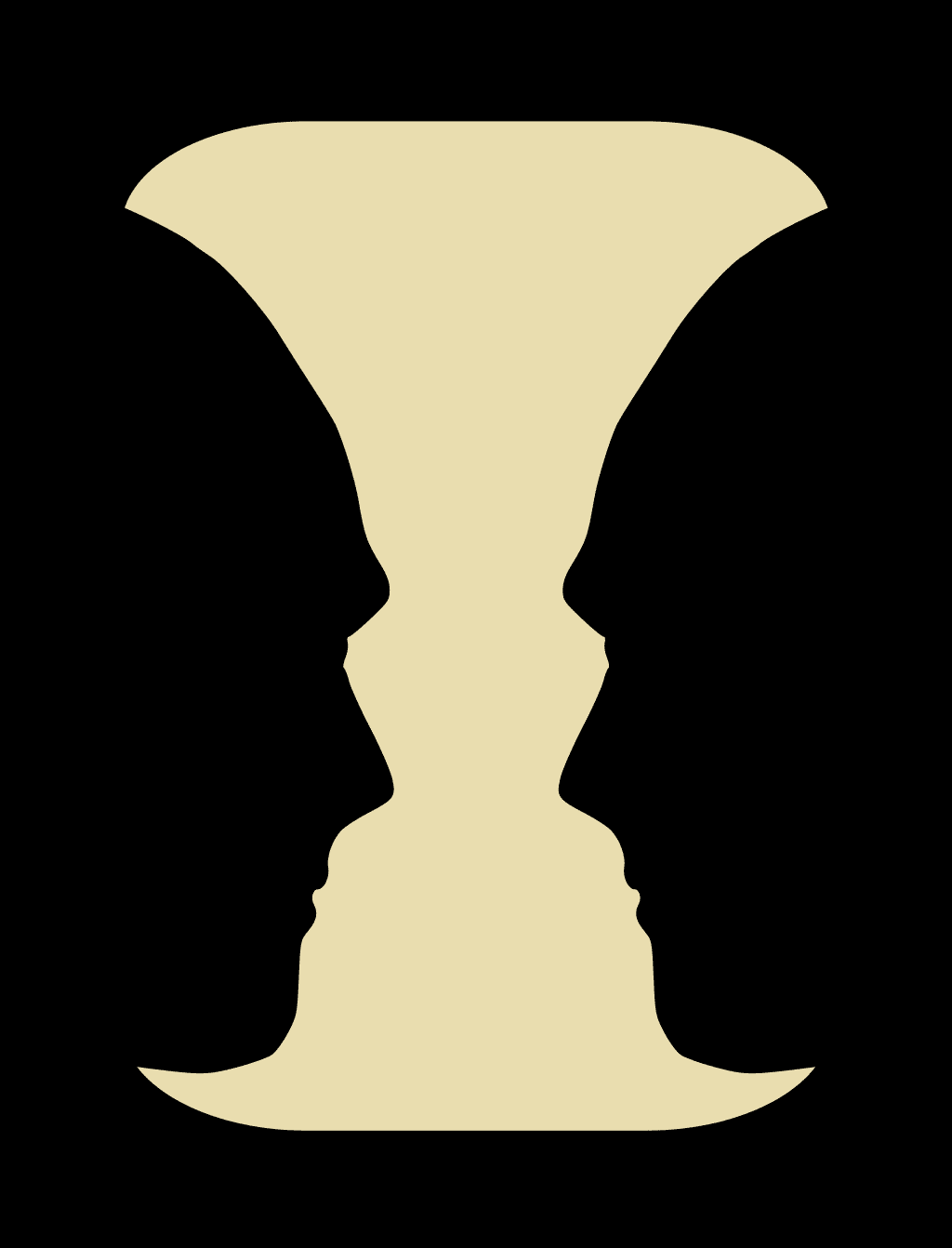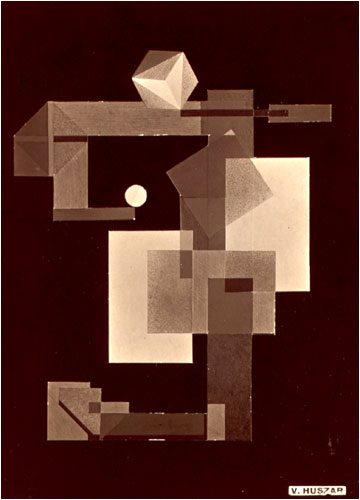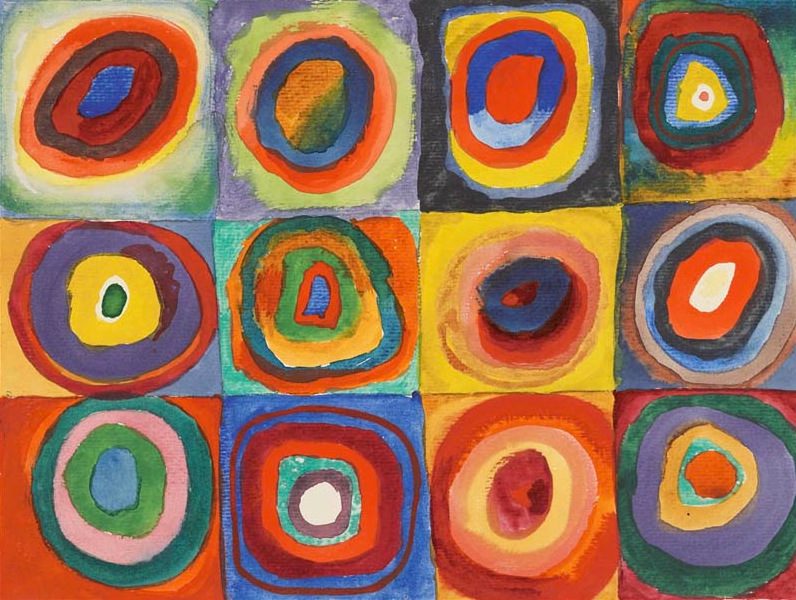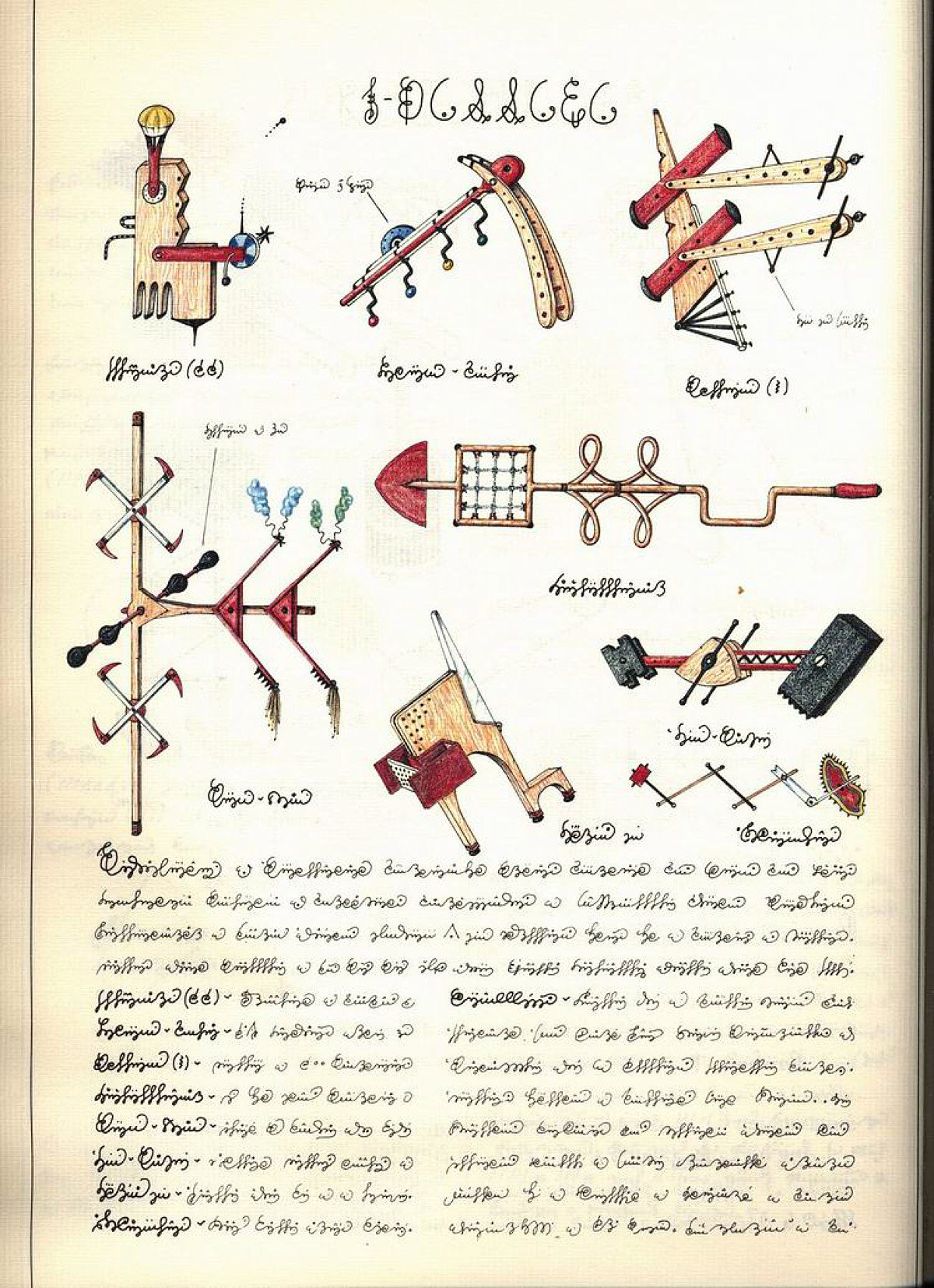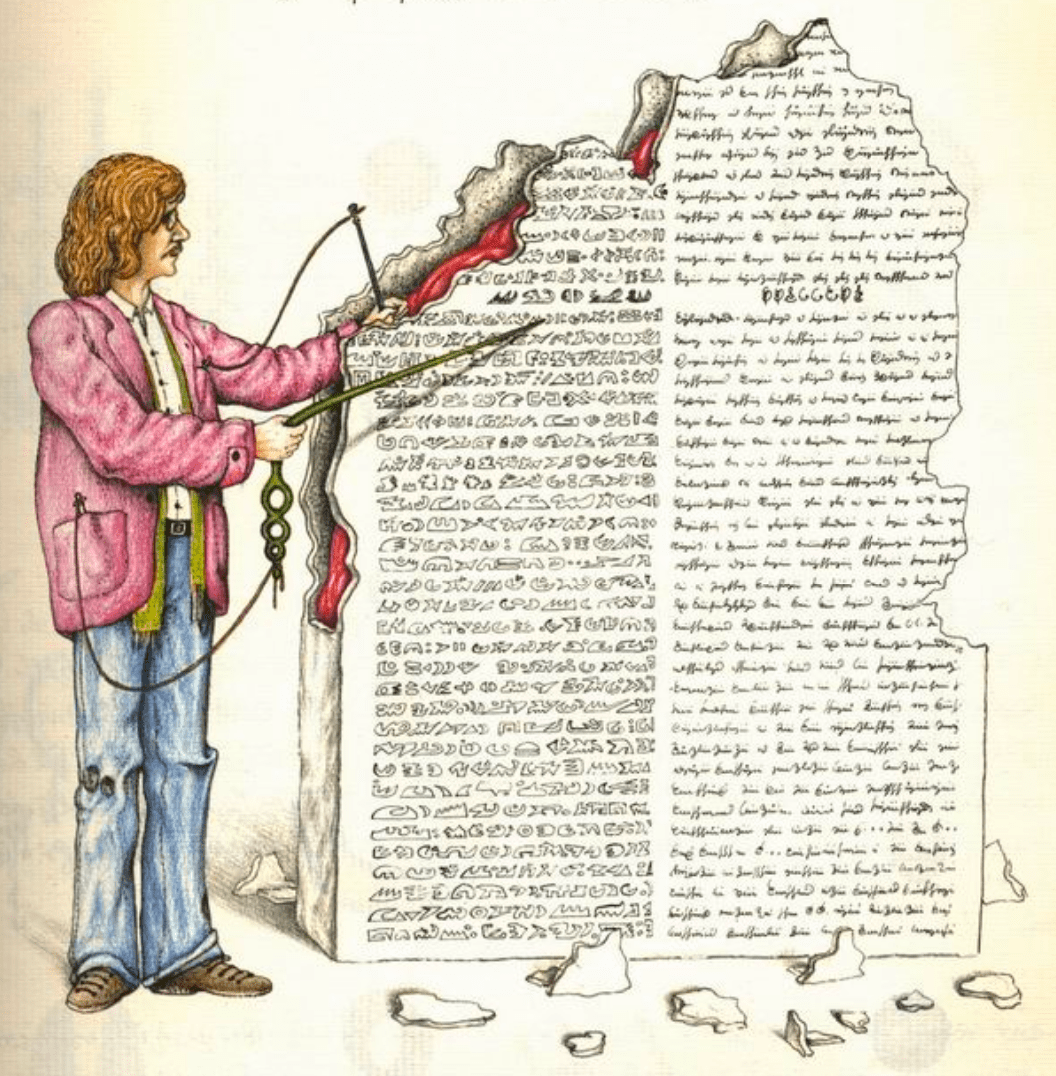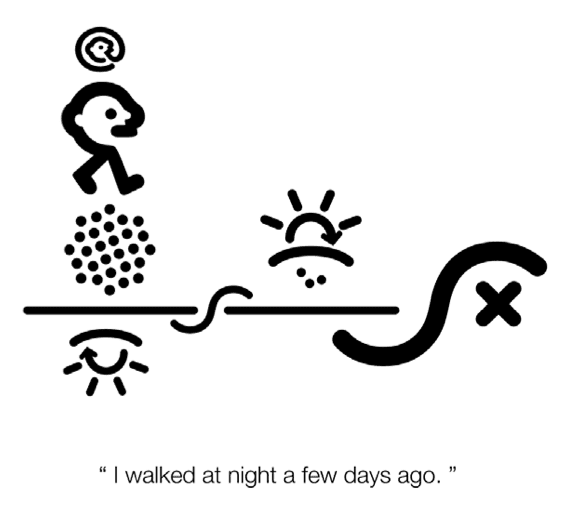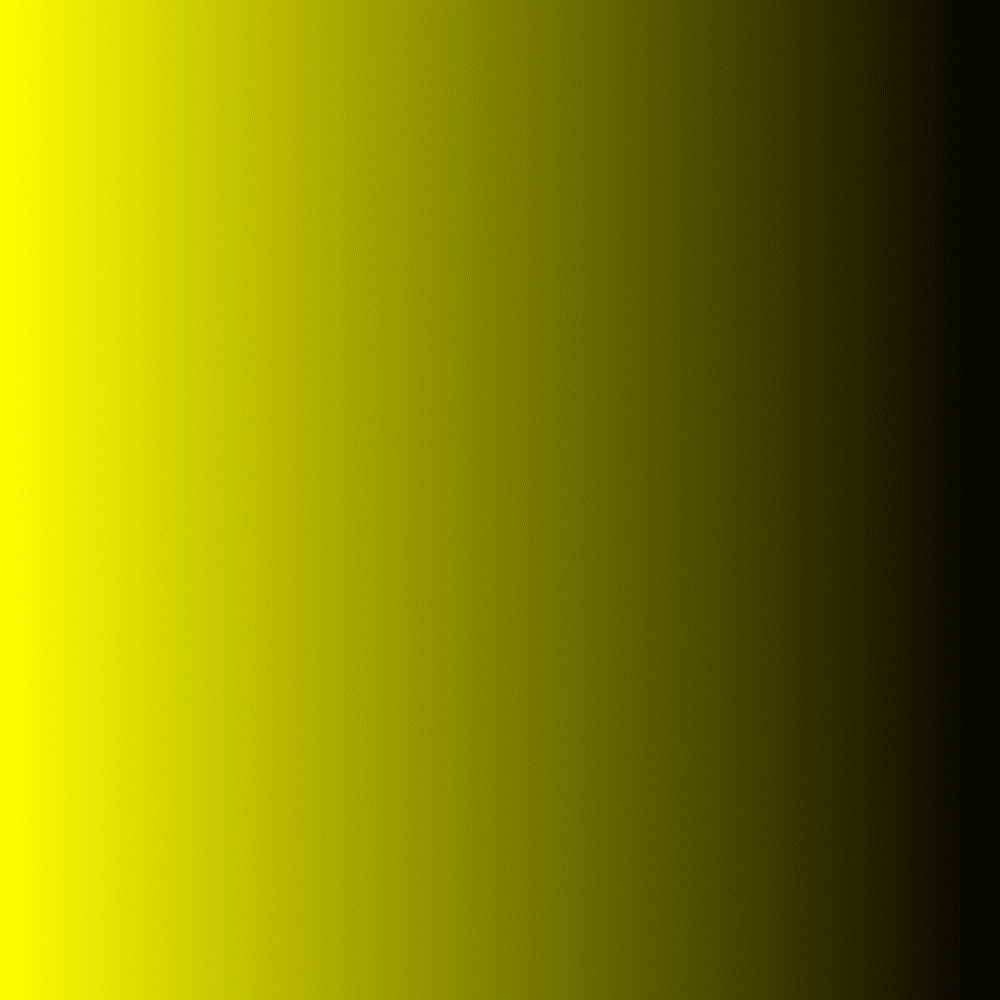A Surreal Conlang
Author: David J. Peterson
MS Date: 12-01-2022
FL Date: 01-01-2023
FL Number: FL-000088-00
Citation: Peterson, David J. 2022. «A Surreal Conlang.»
FL-000088-00, Fiat Lingua,
2023.
Copyright: © 2022 David J. Peterson. This work is
licensed under a Creative Commons Attribution-
NonCommercial-NoDerivs 3.0 Unported License.
http://creativecommons.org/licenses/by-nc-nd/3.0/
Fiat Lingua is produced and maintained by the Language Creation Society (LCS). For more information
about the LCS, visit http://www.conlang.org/
A Surreal Conlang
by David J. Peterson
In The Art of Language Invention, I mentioned that we haven’t scratched the
surface of conlanging—which I still believe is true. There are many media types that
haven’t been explored (or explored sufficiently), and many assumptions which haven’t
been tested. A few times I’ve asked what a Salvador Dalí-style conlang might look like.
In a response to a comment of mine over at r/conlangs on Reddit, someone asked what
I meant by a Salvador Dalí-style conlang—which is a fair question. Rather than respond
there, I thought I’d write my thoughts up here, in order to give other conlangers some
potential avenues to explore—or at least a sufficient understanding of what I have in
mind.
Let’s start with Salvador Dalí. Everyone is probably most familiar with his
painting “The Persistence of Memory”—the melting clocks picture. Here’s the low res
version from Wikipedia:
A Surreal Conlang—David J. Peterson 2
We call this image surreal, as opposed to abstract, because it kind of looks like realistic
things; they’re just doing things that aren’t realistic. Taking a look at the painting, clocks
are realistic things, and, despite the fact that clocks don’t actually melt like that, they’re
painted realistically modulo the style of Dalí in general and the painting specifically.
Melting, however, is also a realistic thing. We have plenty of experience with things that
do melt when heat is applied (e.g. cheese). What Dalí is hoping the viewer will accept is
that if clocks like this were to melt, it might very well look like this. The fact that the
painting is so famous is at least some indication that he was right. So at least with
respect to these clocks, Dalí has taken two realistic things that aren’t combined in nature
and combined them in a way that feels authentic, even if it defies reality.
This is the first principle I want to focus on: the blending of incongruous
elements. With language, we have a lot of avenues to play with. Something like
orthography is not potentially as interesting, simply because as a visual element, a lot of
what could be done has been done already in visual art. Instead, I want to consider
phonology, grammar, and the lexicon. Phonology is probably the lowest hanging fruit
here. We know how phonological systems work, and we know how other sound (or
manual) systems work, and so it’s easy to imagine incongruous blends (a sound system
built off coughs; the sounds made from dropping objects of different weights and
compositions; car horns, etc.). The lexicon may be the next easiest to imagine, and to
some extent, conlangers have played around in this way. For example, taking nouns and
turning them into verbs (there is no concept “cat”, just a verb “to be a cat”), or blending
A Surreal Conlang—David J. Peterson 3
nouns and verbs to make words (cf. Pete Bleackley’s Iljena). Grammar is where things
get interesting.
For example, let’s take a realistic object like a clock, and a realistic grammatical
concept like a verbal system. A simple (and not very interesting) blend would be having
tenses that vary based on the hour and minute, e.g.:
Digits
Zero
One
Two
Three
Four
Five
Six
Seven
Eight
Nine
Ten
Eleven
Twelve
Hours
Sixths of an Hour Minutes
a
e
i
o
u
ǝ
p
t
k
m
n
f
s
h
l
r
p
t
k
m
n
f
s
h
w
j
l
r
So, for example, you could have some nonce sentences like this:
• Keli kiropen. “The cat slept at 1:04.”
• Keli kiromus. “The cat slept at 4:46.”
• Keli kirolir. “The cat slept at 11:29.”
A Surreal Conlang—David J. Peterson 4
And so on. The implementation here is straightforward for demonstration
purposes. Starting here, you could jazz it up via whatever phonology you’re using,
make a 24 hour clock, add AM/PM, combine it with other things like days of the week,
months of the year, etc. It should be fairly obvious why a system like this doesn’t exist—
and never would exist—in a natural language, and it also doesn’t feel like a system
that’s human usable (we’re not that reliable when it comes to keeping time).
But this isn’t the only way that a clock could be combined with a verbal system—
or any grammatical system. As another example, perhaps there could be different sets of
morphology used by the speaker depending on the hour—or stretches of several hours.
Think of it like clothing in the 19th century. This could be done in a very
straightforward way:
Times of Day
Past
Present
Future
Morning (0500-1100)
-sin
Afternoon (1100-1700)
-tan
Evening (1700-2300)
-lon
Night (2300-0500)
-kun
-si
-ta
-lo
-ku
Or it could be done in a more aggressive way:
Times of Day
Times of Day
Effect
-sik
-tak
-lok
-kuk
Morning (0500-1100)
All verbal and nominal forms are used. Standard phonology.
Afternoon (1100-1700)
No verbal inflections used. Full nominal inflections. All
voiceless obstruents are voiced.
Evening (1700-2300)
Word order switches to VSO with full verbal inflections, but
reduced nominal inflections. Intervocalic lenition applies.
A Surreal Conlang—David J. Peterson 5
Times of Day
Effect
Night (2300-0500)
Light verbal inflection, no nominal inflection, SVO word
order. All voiced obstruents are voiceless.
Again, these are just examples. As with any conlang, it’s less impressive to add a
feature simply for the sake of adding a feature; it’s more impressive to do something
interesting with that feature, or give it an interesting backstory—a reason for being
there.
Let me take a paragraph sidebar here to talk about naturalism. It’s certainly
possible to try to come up with fictional cultures to justify things like changing the
language based on the time of day. There’s plenty of SFF fluffery you can gin up to say,
“Their society is so regimented that there’s a rule for what you have to be doing and
wearing and saying at every single moment of the day! It’s because there were these
clock beasts called the Rolexians, and they had to fight them off by doing the same thing
every day at the same time, and…” Etc. That kind of flies in the face of surrealism. The
point of “Persistence of Memory” wasn’t for the viewer to imagine a world where
clocks melted, and why realistic you would come across that. There wasn’t a world
there at all. It asks the viewer to consider something they’d never considered before and
reflect on what that might mean. A conlang can do the same thing.
Moving back to the lexicon, imagine that instead of the grammar being affected
by the hour of the day, it was the set of vocabulary. It’s a bit arbitrary, but imagine you
couldn’t use any word starting with a stop, voiced or voiceless, between the hours of 5
and 11. The choice of feature and hours is arbitrary. Is there a potential conlang where
those choices aren’t arbitrary, but might actually be interesting?
And actually, before leaving clocks, imagine a language with the following noun
A Surreal Conlang—David J. Peterson 6
cases (call them suffixes):
Hours of the Day
One o’Clock
Two o’Clock
Three o’Clock
Four o’Clock
Five o’Clock
Six o’Clock
Seven o’Clock
Eight o’Clock
Nine o’Clock
Ten o’Clock
Eleven o’Clock
Twelve o’Clock
AM
-ap
-at
-ak
-am
-an
-af
-as
-ah
-aw
-aj
-al
-ar
PM
-up
-ut
-uk
-um
-un
-uf
-us
-uh
-uw
-uj
-ul
-ur
You might be wondering what these cases mean, and frankly, so am I. What could
they mean?! I have no idea. But if this was what you had, what else could you do?
You’d have to use them somehow. It might be simple with intransitive verbs:
• Keluk kiro. “The cat slept at 3:00 p.m.”
• Kelal kiro. “The cat slept at 11:00 a.m.”
But what about multiple nouns? What would this mean?
• Keluk makup kiro. “The cat (3:00 p.m.) the dog (1:00 p.m.) slept.”
A Surreal Conlang—David J. Peterson 7
The cat slept after the dog? On the dog? With the dog? The cat slept and the dog
didn’t? The cat slept despite the dog trying to play with it? A conlanger could decide, or
could simply create the system and see what users decided to do with it.
From here, I’d like move from the surreal to the abstract. Take Pablo Picasso at
his most famous—his cubist phase. This is Picasso’s “Portrait of Dora Maar”:
Looking at this, we get the sense that it’s a posed woman sitting down, but it’s certainly
light years away from realism. The details and quality are not realistic enough to be
called surrealism: this is abstract.
There is a key element of this painting I want to elaborate on, which is what I call
the simultaneous expression of the incompatible. Many of the faces featured in
Picasso’s cubist work can best be described as a simultaneous portrait and profile. That
is, we simultaneously get a shot of the subject looking to her left, and looking directly at
us (note that this is filtered through Picasso’s style; it could be done in many other
A Surreal Conlang—David J. Peterson 8
ways). We know that humans can only move their head in one way, and can only be
observed at a specific moment in one way. This is an attempt to show us what it might
look like if we could see both in a frozen moment of time simultaneously.
What might a conlang analog of this be? With the phonology, the obvious
application is layered communication. It could be as simple as uttering two lines at
once, or even more bizarre. If you’ll allow me to use color, say you had a phonology that
divided itself as follows:
Red
Blue
Green
Yellow
Black
Stops
Fricatives
p
f
Approximants l
Nasals
Vowels
m
a
t
s
r
n
e
k
ʃ
w
ŋ
i
q
x
j
ɲ
o
ʔ
h
ʀ
ɴ
u
Then imagine a sentence like this:
• Keli maku we kiro. “The cat slept with the dog.”
And then imagine that this sentence simultaneously expressed the following:
• L ma. “I am happy.”
• E er. “The sky is dark.”
• Kikw ki. “Parrots call out.”
• O. “A home.”
• U. “Warmth.”
A Surreal Conlang—David J. Peterson 9
Basically, you have six different languages: Five with very small phonologies and
a limited lexicon, and one that is, more or less, normal. And every time you used the
over-language you end up saying (well, depending on the specific words used) between
one and five other things in one to five other languages. Whether these languages could
be created in such a way that the user could consciously craft an actual series of
messages without it being like solving a Rubix cube, crossword puzzle, and Sudoku
simultaneously is not something I’m certain of, but the process could also be a
meditative act.
If you’ve heard of the “cut up” technique popularized by William S. Burroughs,
1
I encourage you to take a look at how David Bowie used it. There’s an easily findable
video of him online describing how he did it. He didn’t use the cut up technique to
actually write lyrics (i.e. he wouldn’t write lyrics, rearrange them at random, and then
sing them). Rather, he’d take poetry he’d written, cut it up, rearrange it, and then use
the results to inspire him. Sometimes the results would be fruitless gibberish, but other
times it would suggest ideas or images to him he might never have had otherwise—or
give him a new window into what he had written. A set of conlangs like this might be
used in roughly the same way. That is, one writes a story or a poem or does a
translation into the main conlang, then figures out what the red, blue, green, yellow, and
black versions of the piece come out to. Some of it might be gibberish, but some of it
1
Briefly, the cut up technique is to take a completed text, whether a poem or story, cut the
sentences into strips, then cut those strips up between words and clauses arbitrarily, then
randomly sticking them back together. For example, if we used the text of “Mary Had a Little
Lamb”, you might end up with sentences like “Mary had a little as snow everywhere Mary” or
“And everywhere that lamb, little sure to”.
A Surreal Conlang—David J. Peterson 10
might be interesting, and might conjure ideas that could propel the conlanger into other
avenues of thought, conlang-related or otherwise.
With grammar, applying this notion of simultaneous incompatibility may be
more challenging, but it might help to consider a guiding metaphor. For example,
wherever the quote came from, many have heard that everyone is the hero of their own
story. That isn’t so in grammar. Whether the language is accusative-aligned, ergative-
aligned, split-S, whatever, each noun plays one role. Many languages lend importance to
one roll over another. For example, when a verb agrees with the subject, or with the
absolutive argument, that noun has a status the others in the sentence will lack.
Languages often have machinery that allow them to promote a lesser role to a greater
one (passivization, antipassivization, application, etc.), but as with two photographs, it
is one state or the other; never both.
What if it were both?
So, you can have:
• Tama keli muhe. “The boy pet the cat.”
And you might also have:
• Keli tama so nimuhe. “The cat was petted by the boy.”
Could there be a way to simultaneously express “The boy pet the cat” and “The
cat was petted by the boy”? The promotion and demotion of both roles simultaneously.
It might be a bit cumbersome in a spoken language (with agglutination, you could end
up with one of those preposterous alphabet soup languages, where T’fskhomüsipunoruni
A Surreal Conlang—David J. Peterson 11
ksiíít’purosiruni tokohuraà’øsipurosiruniruni means “I saw a dog”), but it might work out
in a visual language. For example, consider the famous image Rubin’s vase:
Viewed one way, it looks like an image of an ivory vase. Viewed another way, it looks
like the profiles of two humans looking at each other in black. If case roles, for example,
were expressed visually (perhaps as a kind of border surrounding a particular noun,
they could be done in such a way that looked at once way, a word appeared to be
nominative, but looked at another way, it appeared to be a demoted agent—and the
same with accusative and a promoted patient. A role like the inessive might be viewed
one way as having something inside it, and another way as surrounding that item. And
this is just looking at that one element: perspective in terms of grammatical role. There
are countless other simultaneous incongruities that could be explored in a language.
Finally, I’d like to bring up another abstract painting to discuss the last principle I
wanted to examine which is filtering. Being users of any language, we know that our
mental experience is filtered through language when we express ourselves. Some are
A Surreal Conlang—David J. Peterson 12
better at it than others (even we can be better or worse at it depending on the time of
day and who we’re talking to), but I doubt there’s a human who’s ever lived who felt
that they were able to perfectly express the entirety of their mental interiority to any
other human being—or even to their own satisfaction with pen and paper. Even so,
natural languages are all roughly equal filters. Natural language is our best attempt at
creating as neutral and useful a filter as possible—one that allows the most through that
others can actually interpret. A conlang can be as useful a filter as a natural language.
Some would argue they might be able to create a better filter than a natural language,
and they might right, but few intentionally create worse filters. But worse filters could be
interesting. Take this painting by Vilmos Huszár. It’s entitled “Mechano-Dancer”, and it
looks like this:
Somewhere in this painting we get the sense of a human (or humanoid figure), and see
how it might be dancing, but it’s barely a notion. It’s not clearly anything—it’s an
A Surreal Conlang—David J. Peterson 13
arrangement of shapes—but it’s done in such a way that if you squint, it might be kind
of humanoid. It’s not because the artist couldn’t draw a human: It’s because the style is
so strong that it provides a heavy filter through which little escapes.
The only version of this we see in conlanging is the minimalist language, but all
minimalist conlangs approach the problem in roughly the same way: try to get a small
number of lexemes that cover a lot of lexical territory, so that users can use it to kind of
get at every corner of expression, but in a smaller way. That certainly does achieve the
effect, but it does so in a rather democratic way.
What if it were done in an autocratic way?
For example, take Zenglish, something I just invented. It’s the English language,
but you can only use words starting with the letter Z. That’s way more words than any
minimalist conlang, but it’s missing a lot of very important words (e.g. “the”, “a”, “is”,
“be”, “have”, “was”, “were”, all the WH-words, “ice cream”…). If you had to, though,
you could probably do something with it. You’d have to create a new grammar, and use
English in a very different way, but the results would sure be interesting!
So back to a minimalist conlang, rather than jumping to semantic primes, why
not think about what filter you want to place on your speakers? For example, what if
the only nouns were different types of snakes? Or as an homage to Piet Mondrian, what
if the only adjectives in the entire language were red, yellow, blue, black, and white?
Nothing for happy or big or fast: just the colors.
Jeff Jones and I created a joke conlang idea that we thought was hilarious, but I
don’t think anyone else got it. The conlang was called Jaguar, and the main verb of
A Surreal Conlang—David J. Peterson 14
every clause had to be inflected to let the listener know what the jaguar was doing
(because if there was a hungry jaguar about, wouldn’t you want to know what it was
up to?). So it wouldn’t matter if the conversation was, “How are you doing?”, “Oh, I’m
fine. I’ve been working on a book. How about you?”, “Just keeping my plants healthy”,
etc.; the verbs would be something like kanaras “are (I don’t see the jaguar, but I heard
him when I was coming in)”, kanavet “am (I didn’t hear or see the jaguar)”, solusav
“been working (I just heard the jaguar yowl)”, duhekal “keeping (the jaguar is on the
prowl)”. Basically, it’s a language where an undercurrent of the threat of an ever-
present, hungry jaguar is made explicit in every sentence, so that all users are
mandatorily aware of the jaguar’s movements and location.
Perhaps the most familiar, albeit incomplete, instantiation of an idea like this is
the Smurf “language”, or things like it. Basically, for the Smurfs, “smurf” is a noun that
refers to their type of being, but it can also be used as a verb to mean anything and
everything. It can be used as an insult (“Get smurfed!”), derived into an adjective
(“Smurferific!”), used as a general verb of motion (“Smurf on over to my place!”), or
other context-specific verbal actions (“Come over here and smurf with us!”). The joke
with systems like this is there’s only one such word and it stands for everything. If, on
the other hand, a conlang had, say, a hundred of these, it might more closely
approximate the kind of abstract work you see in the De Stijl movement.
Finally, I would like to talk about what one might do to create a truly abstract
conlang—something that skirts the very boundaries of what we think of as language.
A Surreal Conlang—David J. Peterson 15
Here are a couple of paintings by Wassily Kandinsky—first “Squares with Concentric
Circles” and then “Painting with a Red Stain”:
These paintings don’t portray anything—or rather, nothing realistic. The first has some
identifiable shapes (squares and circles), but the second is just a mass of color with no
clearly identifiable shapes.
The first thing that might jump to your mind vis-à-vis conlanging when looking
at these paintings is gibberish. Gibberish does have a place, but there’s actually more
systematicity to abstract paintings like these than gibberish. True gibberish is off-the-
cuff, and often has more in common with the L1 of the speaker than not. Gibberish is
improvised and lacks the discipline and rigor of a good abstract painter’s approach.
Even if an abstract painting looks like a mess of paint, the abstract painter chose the
paint, and chose how they were going to put it on the canvas, even if that method was
unconventional, as with Jackson Pollock and his method of flinging paint at the canvas.
With gibberish, the sounds chosen are rarely chosen with care—or consciously at all.
How might it look if one were to craft language-like speech with care, without meaning
behind it?
A Surreal Conlang—David J. Peterson 16
Perhaps visually, the result might look something like a page out of the Codex
Seraphinianus by Luigi Serafini:
The book itself is a fantastical encyclopedia of a fictional world, but the absolute wall of
text in an invented script that resolves to nothing gives one a distinct visual impression.
It strikes one as both language-like and also supremely un-language-like (for example,
there are a characters that don’t appear to be punctuation that are repeated three, four,
five, six, even seven times in a row, which is something that happens in no writing
system we know of). One could call it principled gibberish, but the sheer volume of it—
and absurd details like the depiction of a kind of Rosetta stone that features the
indecipherable script being translated into another entirely different indecipherable
script—almost forces your brain to believe that the whole thing must resolve to some
specific meaning. And yet, it remains perpetually elusive.
A Surreal Conlang—David J. Peterson 17
Something to keep in mind when it comes to an abstract language is that natural
languages (and most conlangs, as well) are one dimensional: They are bound by time.
All spoken and signed languages must adhere slavishly to the passage of time, just as
the humans who use them. Sign languages have some limited multimodality (for
example, in American Sign Language, eyebrow position is used to convey important
pragmatic information while one is signing with one’s hands—lip shape, as well), but
they are still governed by time. A conlang need not be. Certainly the most famous
example of this is the Unker Non-Linear Writing System (UNLWS) created by Sai and
Alex Fink, but it’s far from an abstract or surreal conlang. Rather, it’s a sincere attempt
to create a fully functional and useable language that takes full advantage of a 2D space.
A language that really captures the beauty and spirit of this idea without pushing the
A Surreal Conlang—David J. Peterson 18
limits of the medium the way UNLWS does is called Elephant’s Memory, by Timothee
Ingen-Housz:
Elephant’s Memory is a minimalist language with a unique artistic and iconic
design style that can be used in a non-linear fashion. In the image above, you can
“start” from anywhere and still get to the same meaning. Furthermore, it could have
been written in several different ways.
Imagine for a moment taking full advantage of both 2D space, the visual
medium, speech, hearing, and a specific art form, like painting. Imagine, for example,
mapping heat to a vowel height spectrum as well as a red-blue spectrum, and happiness
to a front-back spectrum as well as a yellow-black spectrum. It might look a little like
this, more or less : 2
2
I went ahead and retained traditional vowel rounding, but if it were truly computer generated,
I’d imagine all the vowels would instead be unrounded.
A Surreal Conlang—David J. Peterson 19
i
e
ɛ
æ
ǝ
u
o
ɔ
ɑ
The vowels are there to give you an idea, but essentially it would be a computer-
programmed vowel system, so it could utter every vowel sound in the space, with,
ideally, fine-grained distinctions that are close to the kind of distinctions we can make
with color.
Now imagine a digital painting of whatever one wished—it could be entirely
abstract—using only this color palette, and when a viewer runs their mouse over the
image, it provides acoustic feedback in the form of the precise vowel that corresponds
to the color. As one moves the mouse from one color to the next, it transitions
seamlessly from one vowel to another, as if it were a long diphthong, ideally with a
voice quality that corresponds to the image—pleasant or aggressive, loud or soft. It’s
essentially an auditory impression or analog of the painting itself, and the point is
nothing more than to convey the emotion behind the painting.
And, again, the mapping between vowel height and color, the colors themselves
—all of this is arbitrary for the purpose of the example. A conlanger could do anything.
A Surreal Conlang—David J. Peterson 20
To return to an earlier idea, the point of language is to convey what’s in our
heads, and to do so accurately yet simply, so that we can be understood by as many
other human beings as possible. Natural language is our best attempt at doing this as a
collective, yet we know it remains imperfect, and, at times, rather clumsy. Many conlangs
have pushed in the direction of greater precision to make a language that is less
imperfect, but the idea behind surreal and abstract art is to convey something just as
real in a less precise, or less realistic way. Sometimes an image or even a mess of color
expresses an emotion better than words ever could, and a conlang can be used to do the
same thing.
I want to close with an example from literature. Samuel Beckett, best known for
his play Waiting for Godot, wrote a lot of fiction, and a lot of it was very strange, and
grew exceedingly stranger as his career wore on. One of the most bizarre works he ever
produced is called Worstward Ho. It’s written in a kind of pared down version of English
that is barely grammatical and quite confusing. It begins:
On. Say on. Be said on. Somehow on. Till nohow on. Said nohow on.
Say for be said. Missaid. From now say for missaid.
My mind still bends in knots trying to figure out what the heck “From now on
say for missaid” means. And yet, as you read, you begin to get the sense of it, and you
begin to understand more and more of it. And in this short work, Beckett manages to
A Surreal Conlang—David J. Peterson 21
produce one of the better statements about art I’ve read, in a way that no one else could
have:
All of old. Nothing else ever. Ever tried. Ever failed. No matter. Try again. Fail
again. Fail better.
One day I’d love to see the conlang that can do what this does. I’m convinced it’s
possible, and I’m convinced someone else will do it—I just hope to be alive when it
happens.



